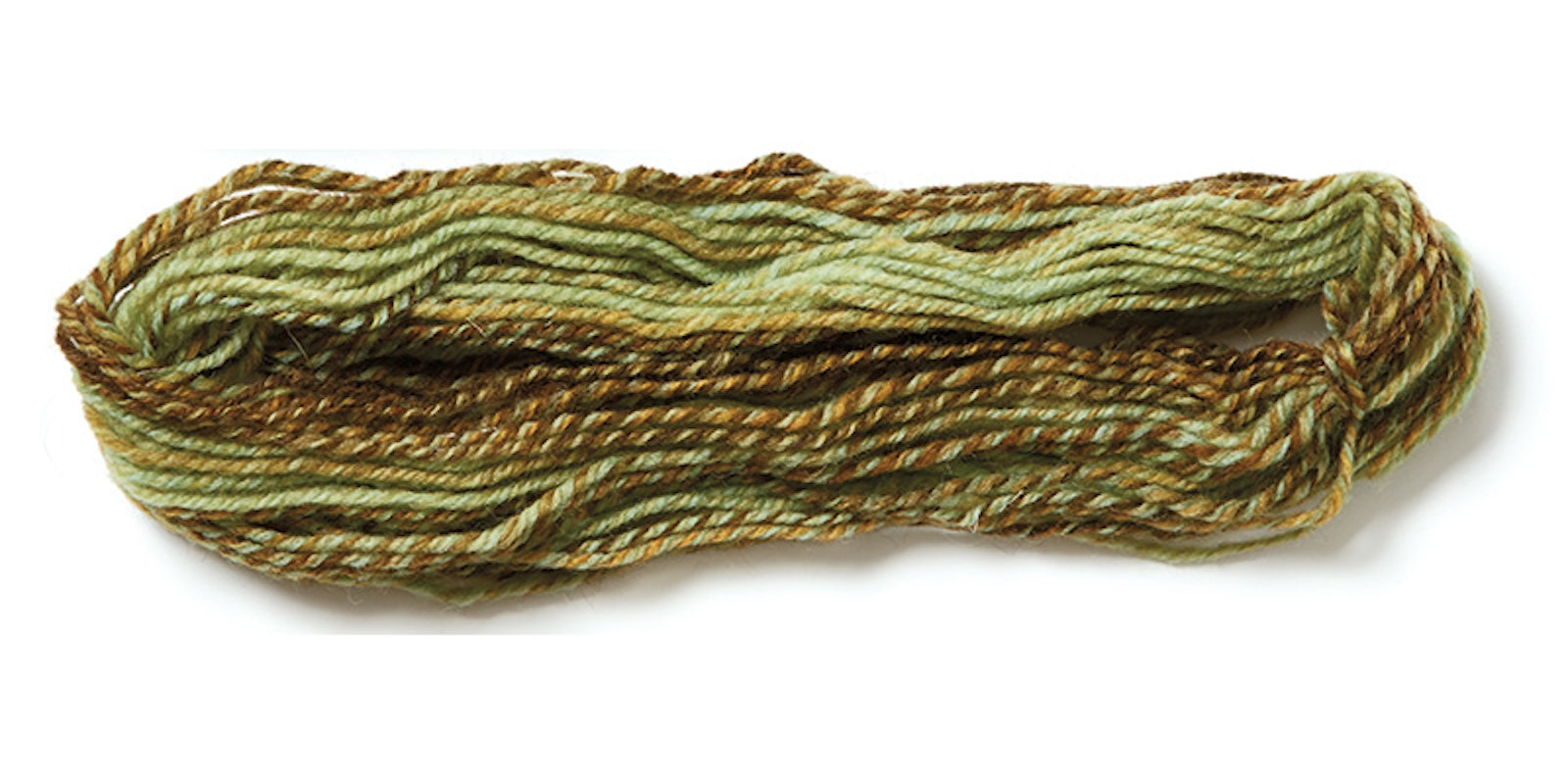After I became a spinner, I developed a definite bias toward plied yarns. It’s true that when we stop at singles we make yarn that’s very difficult for a machine to replicate, but plied yarns are just better.
Here’s why:
Plied yarns are stronger
When two strands bear a load, they can hold more than just one. The twist and counter-twist in yarns makes them more durable.
Plied yarns pill less
Beautiful singles yarns are a heck of a lot more likely to fuzz up and shed than plied ones. Plying helps keeps the fibers in place and anchors them right where you want them: in the yarn.
Plied yarns don’t bias (as much)
Unless you’re going for a very specific effect, you probably don’t want that extra twist that makes the hem of your sweater twist around the wrong way. Plying counters the spinning twist and lets the yarn rest quietly. (Unless you want an unbalanced yarn—which you can still get by plying!)
Here’s how:
Rewind your singles
Instead of plying straight from the bobbins onto which the yarn was spun, take a little time to wind the singles from one bobbin to another. It evens out the twist (and, if you can limit the number of spinning wheel bobbins, makes it more affordable). Same thing on a spindle--instead of plying straight from a cop, wind a double-strand ball and ply from there.
Mix up your singles
This is easy to do if you’re rewinding onto smaller bobbins, but it’s a good practice for anyone. Your spinning rhythm may change over a session (or a fleece), and the best way to get even yarn is to spread any inconsistencies out evenly.
Hold the singles under even tension
This is one of the great reasons to ply from a multi-strand ball: the plying twist enters the yarn evenly. For wheel spinners, resist the urge to play horsie and hold the singles like reins--keep all the strands even until the twist enters all at once.

